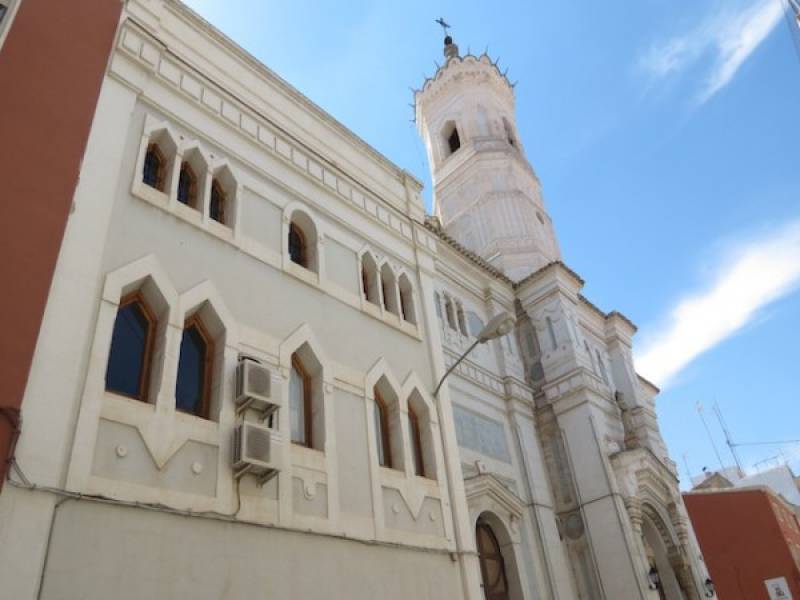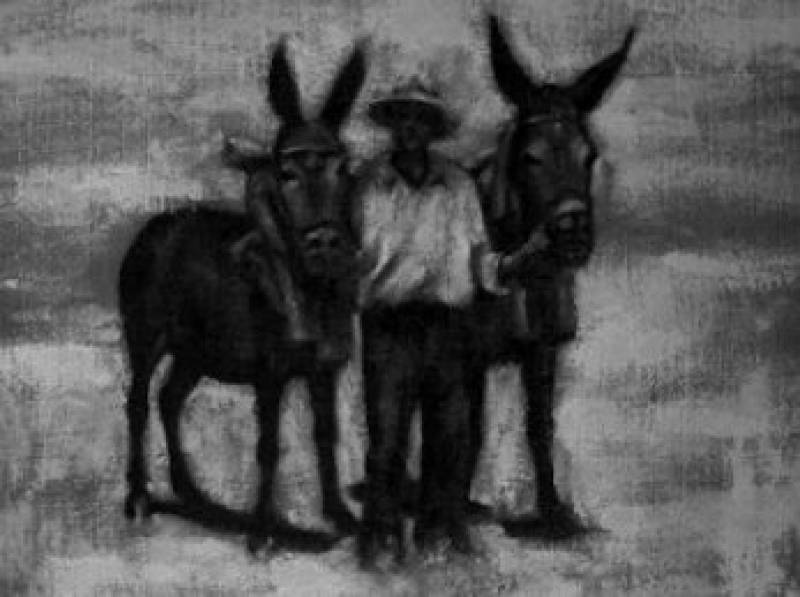
To be listed on the CAMPOSOL TODAY MAP please call +34 968 018 268.

Guidelines for submitting articles to La Manga Club Today
Hello, and thank you for choosing La Manga ClubToday.com to publicise your organisation’s info or event.
La Manga Club Today is a website set up by Murcia Today specifically for residents of the urbanisation in Southwest Murcia, providing news and information on what’s happening in the local area, which is the largest English-speaking expat area in the Region of Murcia.
When submitting text to be included on La Manga Club Today, please abide by the following guidelines so we can upload your article as swiftly as possible:
Send an email to editor@lamangaclubtoday.com or contact@murciatoday.com
Attach the information in a Word Document or Google Doc
Include all relevant points, including:
Who is the organisation running the event?
Where is it happening?
When?
How much does it cost?
Is it necessary to book beforehand, or can people just show up on the day?
…but try not to exceed 300 words
Also attach a photo to illustrate your article, no more than 100kb

The Yecla legend of Diente Negro the Penitent
Black Tooth was called to repent his ways by a bird-footed stranger who persecuted non-believers around Yecla
 In Yecla in days gone by parents told their children the story of “Diente Negro, el Penitente” (Black Tooth the Penitent), a demonic character with feet shaped like those of bird who was said to hunt down and chase non-believers, walking the paths of the Altiplano (modern-day Jumilla and Yecla) in the habits of a Franciscan monk and testing the faith of all peasants he came across.
In Yecla in days gone by parents told their children the story of “Diente Negro, el Penitente” (Black Tooth the Penitent), a demonic character with feet shaped like those of bird who was said to hunt down and chase non-believers, walking the paths of the Altiplano (modern-day Jumilla and Yecla) in the habits of a Franciscan monk and testing the faith of all peasants he came across.
If those he questioned wore the symbols of the Cross or some other demonstration of their Christian faith then they were in luck, saving themselves from the hands of “Diente Negro” – hands, which according to the legend, could cause burn marks on the doors they touched if the residents closed in order to escape his unwanted attention.
Against the backdrop of this terror, the mother of an unbeliever sewed a cross into the breast of his clothing, and the story goes that when he took his mule to drink from a local stream a small man appeared by his side, dressed in a Franciscan habit and asking where he could find the home of Magdalena, which, he said, was home also to his religious brothers.
The peasant pointed him in the right direction and it was only when he bent town to tie his “alpargata” shoes that he noticed the bird-like feet of the stranger. Terrified, he ran home with his mule with the monk in hot pursuit, but the peasant escaped by riding his mule at terrific speed and as soon as he arrived at his house, which was next to the church of El Niño Jesús, he ran inside and locked the door.
 The monk placed his hand on the door, shouting “if it hadn’t been for the Cross your mother sewed onto your tunic you would not have escaped me!”
The monk placed his hand on the door, shouting “if it hadn’t been for the Cross your mother sewed onto your tunic you would not have escaped me!”
After this, the stranger became a member of the Order of the Barefoot Franciscans, eventually becoming a priest and preaching in the area under the name of Brother Martín de la Mota before he died and was buried in the monastery of Villena.
This is a story which was apparently told to children in Yecla to discourage them from taking off the clothing which bore the symbol of the Cross, thus ensuring that they were protected from evil at all times.
However, a more detailed version of the tale can be found in a local history written by Pascual Giménez Rubio in 1865, offering further supposed details. This version states that the man in question looked after the mules in the house of Gabriel Ortuño (next to the church of El Niño Jesús) and was of questionable morals before changing his ways and living an honest life. This was the situation when the stranger began following him, and the mule-carer agreed to meet him to talk after leaving the animals in their home.
They later headed for the old spring and it was then that the young man noticed the strange feet of the other man, and following a heated exchange the bird-footed man left his mark on the door, as in the other version.
Yet another version changes the name of the preacher to Brother Pedro Ortega, who took refuge in the monastery of Santa Ana del Monte in Jumilla, adding that rather than a mule keeper he was a “young gallant”.
For more local visiting information, events and news go to the home page of Yecla Today.
Oficina de Turismo de Yecla
In early 2025, due to renovation work at the usual office, the service is located on the other side of the Plaza Mayor at Calle Epifanio Ibáñez nº 2 (click for map).
 Yecla is a large municipality in the north of the Region of Murcia, home to just under 35,000 people, and these days is best known for its wines, which enjoy Denomination of Origin status, and its furniture production, which has its origins in the abundance of pine trees on the mountainsides and the high plateaux.
Yecla is a large municipality in the north of the Region of Murcia, home to just under 35,000 people, and these days is best known for its wines, which enjoy Denomination of Origin status, and its furniture production, which has its origins in the abundance of pine trees on the mountainsides and the high plateaux.
 While visitors in the 21st century may be attracted primarily by wine tourism, the town (or city, as it was proclaimed in 1878) also has a wide historical, cultural and natural heritage, and an identity quite different from the coastal areas of the Region of Murcia. For this reason it is often grouped together with its neighbour and fellow wine-producing area Jumilla as part of the Altiplano area.
While visitors in the 21st century may be attracted primarily by wine tourism, the town (or city, as it was proclaimed in 1878) also has a wide historical, cultural and natural heritage, and an identity quite different from the coastal areas of the Region of Murcia. For this reason it is often grouped together with its neighbour and fellow wine-producing area Jumilla as part of the Altiplano area.
Yecla borders with Castilla-La Mancha and the Region of Valencia and is closer to Alicante coastal areas than much of Murcia. These visitors come to see the historic old town itself - an atmospheric and interesting place, crammed full of history - the natural beauty of Monte Arabí, with stunning views for those who enjoy the outdoors, the gastonomy and of course the wine route.
 Yecla boasts cave paintings from 10,000 years ago in Monte Arabí, a Bronze Age settlement at El Arabilejo, Iberian remains in El Pulpillo and a Roman administrative centre at Los Torrejones as well as the remnants of the 11th century Moorish castle on the hill behind the town. More modern (and complete) testimony to the past are the buildings in the town centre, which include the grandiose Basílica de la Purísima, with its striking blue dome, the archaeological museum and the attractive Plaza Mayor, where the 16th century Town Hall stands alongside the Renaissance Casa de los Alarcos, the clock tower and the old grain store.
Yecla boasts cave paintings from 10,000 years ago in Monte Arabí, a Bronze Age settlement at El Arabilejo, Iberian remains in El Pulpillo and a Roman administrative centre at Los Torrejones as well as the remnants of the 11th century Moorish castle on the hill behind the town. More modern (and complete) testimony to the past are the buildings in the town centre, which include the grandiose Basílica de la Purísima, with its striking blue dome, the archaeological museum and the attractive Plaza Mayor, where the 16th century Town Hall stands alongside the Renaissance Casa de los Alarcos, the clock tower and the old grain store.
 The tourist office holds a full selection of leaflets, maps, pre-planned routes, accommodation and restaurant options and information about visiting Yecla for both individuals and groups.
The tourist office holds a full selection of leaflets, maps, pre-planned routes, accommodation and restaurant options and information about visiting Yecla for both individuals and groups.
There is parking close to the tourist office, although those driving to Yecla for the first time are advised to park in Calle Perales.
For further information go to the home page of Yecla Today.
Opening hours:
Tuesday to Friday 8.00 to 15.00
Saturdays 10.30 to 14.00 and 17.00 to 19.30.
Public holidays 10.30 to 14.00
Click for map, Yecla tourist office











